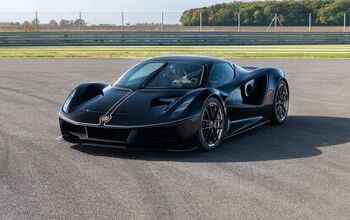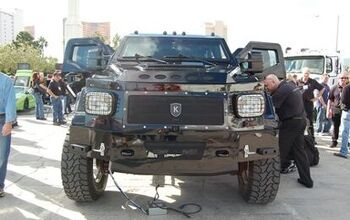E85 Boondoggle of the Day: Water, Water, Everywhere
Two recent developments have tarnished whatever green reputation ethanol has left. First, the news that corn-derived ethanol requires up to three times more water to produce than previously thought has cast a spotlight on the industry, especially in the dry west and southwest. A new study published by the American Chemical Society reports that previous estimates of water used to produce ethanol are inaccurate. The article’s abstract:
Prior studies have estimated that a liter of bioethanol requires 263−784 L of water from corn farm to fuel pump, but these estimates have failed to account for the widely varied regional irrigation practices. By using regional time-series agricultural and ethanol production data in the U.S., this paper estimates the state-level field-to-pump water requirement of bioethanol across the nation. The results indicate that bioethanol’s water requirements can range from 5 to 2138 L per liter of ethanol depending on regional irrigation practices. The results also show that as the ethanol industry expands to areas that apply more irrigated water than others, consumptive water appropriation by bioethanol in the U.S. has increased 246% from 1.9 to 6.1 trillion liters between 2005 and 2008, whereas U.S. bioethanol production has increased only 133% from 15 to 34 billion liters during the same period. The results highlight the need to take regional specifics into account when implementing biofuel mandates.
A common theme in the adoption of green practices is sustainability. As the authors state, the onus on the mandate-makers will be to determine if the the true cost of ethanol is worth more than the water used to produce it. In California, water is liquid gold.
For now, this may all be for naught. The second development is a one-two punch to the ethanol industry: the collapse of fuel consumption and the evaporation of business credit have left scores of ethanol plants high and dry. Sacramento-based Pacific Ethanol—who built three plants in three states and were once the darling of the industry, attracting investment from Bill Gates and the former Secretary of State of California—recently defaulted on a $250 million loan. Gates has dumped most of his shares which now trade at less than fifty cents on NASDAQ; and, in a further blow, rising corn prices threaten to squeeze what margin they have.
In an ironic twist, Big Ethanol’s savior may come in the form of Big Oil. The New York Times reports that Valero, the country’s largest independent refiner, is paying nearly $500 million for seven VeraSun ethanol plants. VeraSun filed for bankruptcy protection last fall. “It’s a good deal for Valero because they have to have ethanol in their blend mandated by the federal government,” said an energy analyst. “Ethanol is still a lousy business, but if you can buy the plants for cents on the dollar, it looks a lot better as Washington is likely to keep mandated production targets.”
Chevron (and Exxon), at 13+ times the capitalization of Valero, is sitting on a hoard of cash accumulated in the epic run up of oil on the markets. They can (and will) wait for more ethanol start ups to die off and, like pigs, gorge themselves on corn.
Early 30s California guy driving a 97 Infiniti I30. Past cars: 90 Cavalier, 82 Skylark, 78 Courier, 61 Beetle.
More by Jeff Puthuff
Latest Car Reviews
Read moreLatest Product Reviews
Read moreRecent Comments
- Corey Lewis It's not competitive against others in the class, as my review discussed. https://www.thetruthaboutcars.com/cars/chevrolet/rental-review-the-2023-chevrolet-malibu-last-domestic-midsize-standing-44502760
- Turbo Is Black Magic My wife had one of these back in 06, did a ton of work to it… supercharger, full exhaust, full suspension.. it was a blast to drive even though it was still hilariously slow. Great for drive in nights, open the hatch fold the seats flat and just relax.Also this thing is a great example of how far we have come in crash safety even since just 2005… go look at these old crash tests now and I cringe at what a modern electric tank would do to this thing.
- MaintenanceCosts Whenever the topic of the xB comes up…Me: "The style is fun. The combination of the box shape and the aggressive detailing is very JDM."Wife: "Those are ghetto."Me: "They're smaller than a Corolla outside and have the space of a RAV4 inside."Wife: "Those are ghetto."Me: "They're kind of fun to drive with a stick."Wife: "Those are ghetto."It's one of a few cars (including its fellow box, the Ford Flex) on which we will just never see eye to eye.
- Oberkanone The alternative is a more expensive SUV. Yes, it will be missed.
- Ajla I did like this one.


































Comments
Join the conversation
And now with the high price of fertilizer the farmers are switching to soybeans. Could be a big corn shortage. How does the government think up so many stupid ideas? Lucky for them they are using other peoples money and not their own.